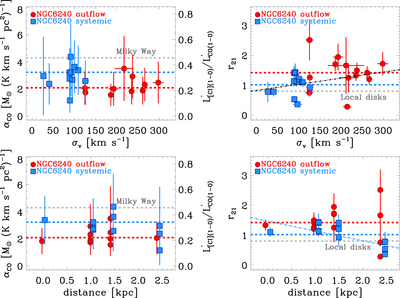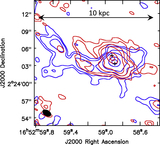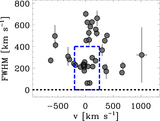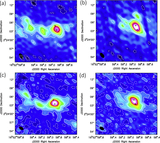Image Details

Caption: Figure 6.
﹩{\alpha }_{\mathrm{CO}}﹩ (left) and r21 (right) as a function of the average velocity dispersion (top) and of the distance from the nucleus (bottom) of the corresponding molecular line components. A detailed explanation on how ﹩{\alpha }_{\mathrm{CO}}﹩ and r21 were calculated can be found in Section 3.3. The y-axis on the right side of the ﹩{\alpha }_{\mathrm{CO}}﹩ plots shows the corresponding [C I](1–0)/CO(1–0) line luminosity ratio. The horizontal blue and red dashed lines are the mean values reported in Table 2 for the systemic and outflow components, respectively. The gray lines indicate the Milky Way ﹩{\alpha }_{\mathrm{CO}}﹩ factor (Bolatto et al. 2013, left panels) and the average r21 = 0.8 measured in star-forming galaxies (Leroy et al. 2009, right panels). The best fits obtained from a Bayesian linear regression analysis following the method by Kelly (2007) are plotted using dot-dashed lines: black lines show the best fits to the total sample, whereas blue and red lines correspond to the fits performed separately on the systemic and outflowing components.
Copyright and Terms & Conditions
© 2018. The American Astronomical Society. All rights reserved.












